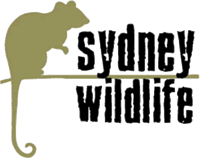
Use of Oxbow’s Critical Care with Ringtail Possums, Beverley Young, Sydney Wildlife
Sydney Wildlife is a volunteer organization which rescues and cares for native wildlife that is injured, sick or orphaned. Animals are rehabilitated and released to the wild. The organization specializes in the problems of urban native animals, its field covering the greater metropolitan area of Sydney. Public education, information and in-service training are part of its services. There is a 24hr. assistance line to the public which takes about 14,000 calls a year. Currently Sydney Wildlife has about 400 members.
There is a high concentration of Ringtail Possums in the northern districts of Sydney – some 600 coming into care each year, 400 of those are babies. The following notes are prepared by Beverley Young who has been the Coordinator for Ringtail Possums for 8 years and keeps detailed records of treatment and care.
Use of Oxbow
Carers in Sydney Wildlife became aware of Oxbow Critical Care only early this year, so we cannot supply any long-term statistical information about its use. However our experience to date has been very positive. These are outlined below.
CASE 1: Male ringtail baby 120g. This possum had come into care at 60g. He had a poor history – feeding problems, fluctuating weight gain/loss, poor sparse fur development. His 3 buddies who received the same care had none of these problems. At 120g. he was starting to develop a ‘spongy’ enlarged abdomen and his tail and head in particular were showing signs of malnutrition and weight loss. Our concern was that he was possibly in the early stages of Caecal Stasis and a regime of treatment was put in place, with comprehensive record taking. The main thrust was in the use of Oxbow Critical Care. He was at this stage feeding himself with formula and fresh native leaves, along with his buddies. However he was taken out 3 times a day to be hand fed with diluted Lectade (hydration and electrolytes) with a sprinkling of Oxbow (about ¼ teaspoon in 10mls fluid). We found this the best way to have him take the Oxbow, it also gave him extra fluids which is part of our treatment regime. This was kept up for 3 weeks. Towards the end of this period he was filling out in the previously skinny areas, his abdomen had decreased in diameter and his fur was thickening up very well. We now started to put the Oxbow into the regular formula feeds (which meant the buddies would get it too), still supplying some extra weak lectade in the cage. The possum went on to be healthy and fit and was eventually released with his buddies at the usual 6 months of age. The rationale in using the Oxbow was to increase nutrition input, and provide fibre to assist in moving material through the caecum, and incidentally to give extra fluids. We have had many babies with similar symptoms in the past who have gone on to develop Caecal Stasis and died. We were very impressed with the results of Oxbow use.
CASE 2: Female 100g. ringtail baby. This possum also was starting to show the signs of malnutrition and had an in-care history of poor feeding and weight gain. She did not have any abdominal bloating however. The regime we used was not as intrusive as the previous one, we just added a sprinkling of Oxbow to the regular feeds over two weeks. Weight settled to a regular gain and all signs of poor nutrition disappeared (thin face, bony tail, sparse hair growth). This one is still in care and doing well with no further intervention.
CASE 3: Female ringtail 80g. baby. This possum had been doing well but started to lose appetite and suddenly developed diarrhoea. Our usual regime for these cases is to initially take off milk formula, giving lectade only for 24hrs. When put back onto milk the diarrhoea returned – Thrush was suspected. As she had already lost a day’s milk feeds I was concerned to keep up her nutrition while on further treatment. She was again taken off milk, given Nilstat for the Thrush (4 days), and her feeds were Lectade (diluted) with Oxbow , for 3 days. On the fourth day she resumed milk feeds, with Oxbow added. At the end of this treatment period she had not lost any weight, her general condition was good and she had no further diarrhoea. This possum is doing well, she is now 220g. and progressing normally.
CASE 4: Male 150g. ringtail, recently rescued. This one was just a very recalcitrant feeder, would not take formula at all and was losing weight. A sprinkle of Oxbow in the formula was enough to encourage him to start lapping and he is now doing well. The apple/banana flavour probably helped! In the past we have added a tiny amount of pure fruit juice to ‘flavour’ the milk with poor feeders but we have never been happy about doing this because of the sugar content, which is contra-indicated for young ringtails’ digestive systems.
CASE 5: This is yet to happen but worth noting. We are starting to use Oxbow as a supplement through the weaning procedure, to give the necessary extra nutrition needed. We are hoping this will make weaning a less stressful time.
Conclusion
Our carers have been very impressed with results from the use of Oxbow and we will certainly be continuing to use it, particularly with young possums showing signs of compromised nutritional status, and the on-going problems that may result from that. The one aspect we are disappointed about is that the probiotic elements are destroyed on entry into the country because of our quarantine rules. It would certainly be an advantage to have probiotics in there (particularly when the patients have been on antibiotics).
I would be very happy to discuss our use of Oxbow with Vets or other carers and nurses. My email address is [email]ianbevyoung@bigpond.com[/email].
Beverley Young OAM





